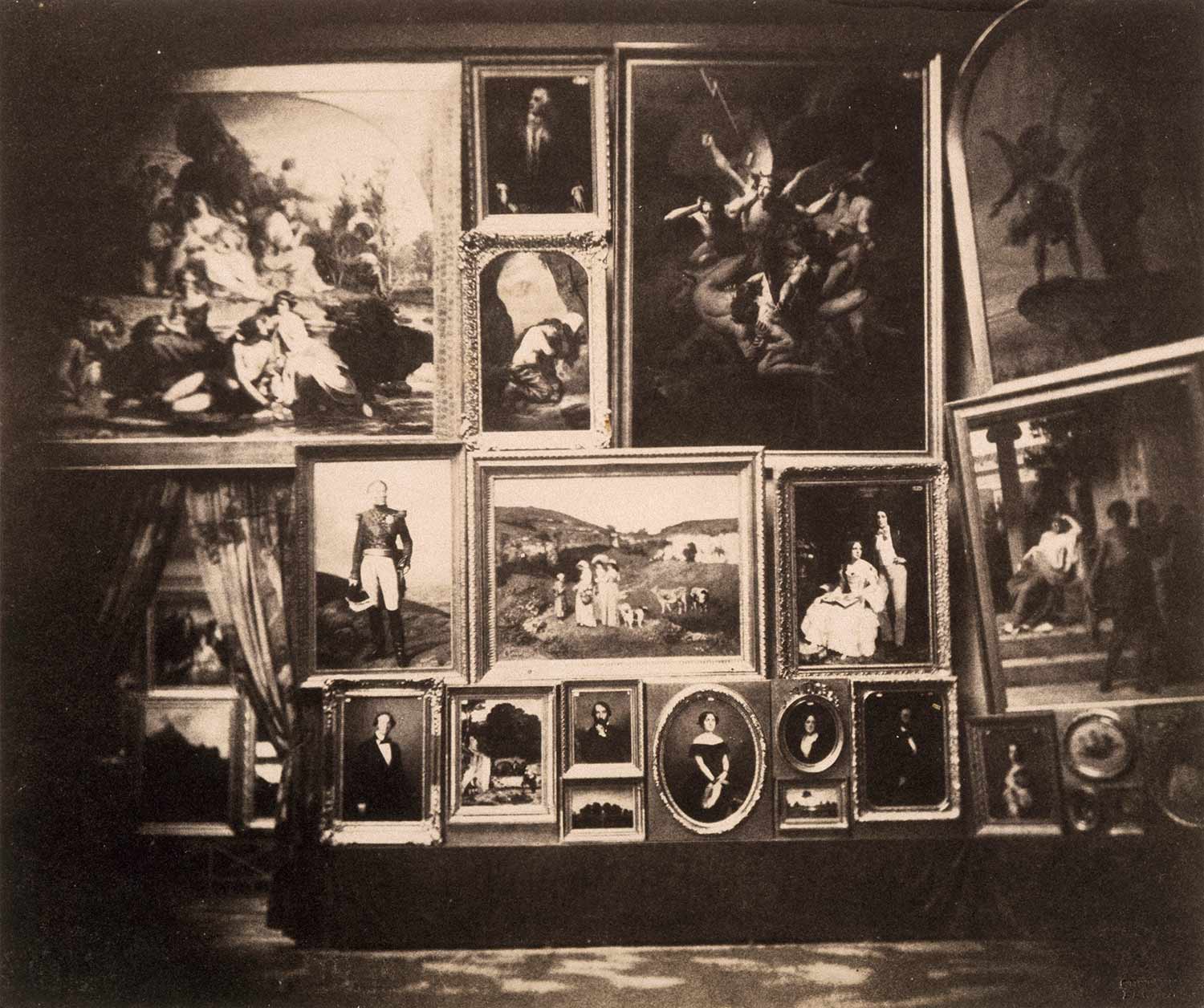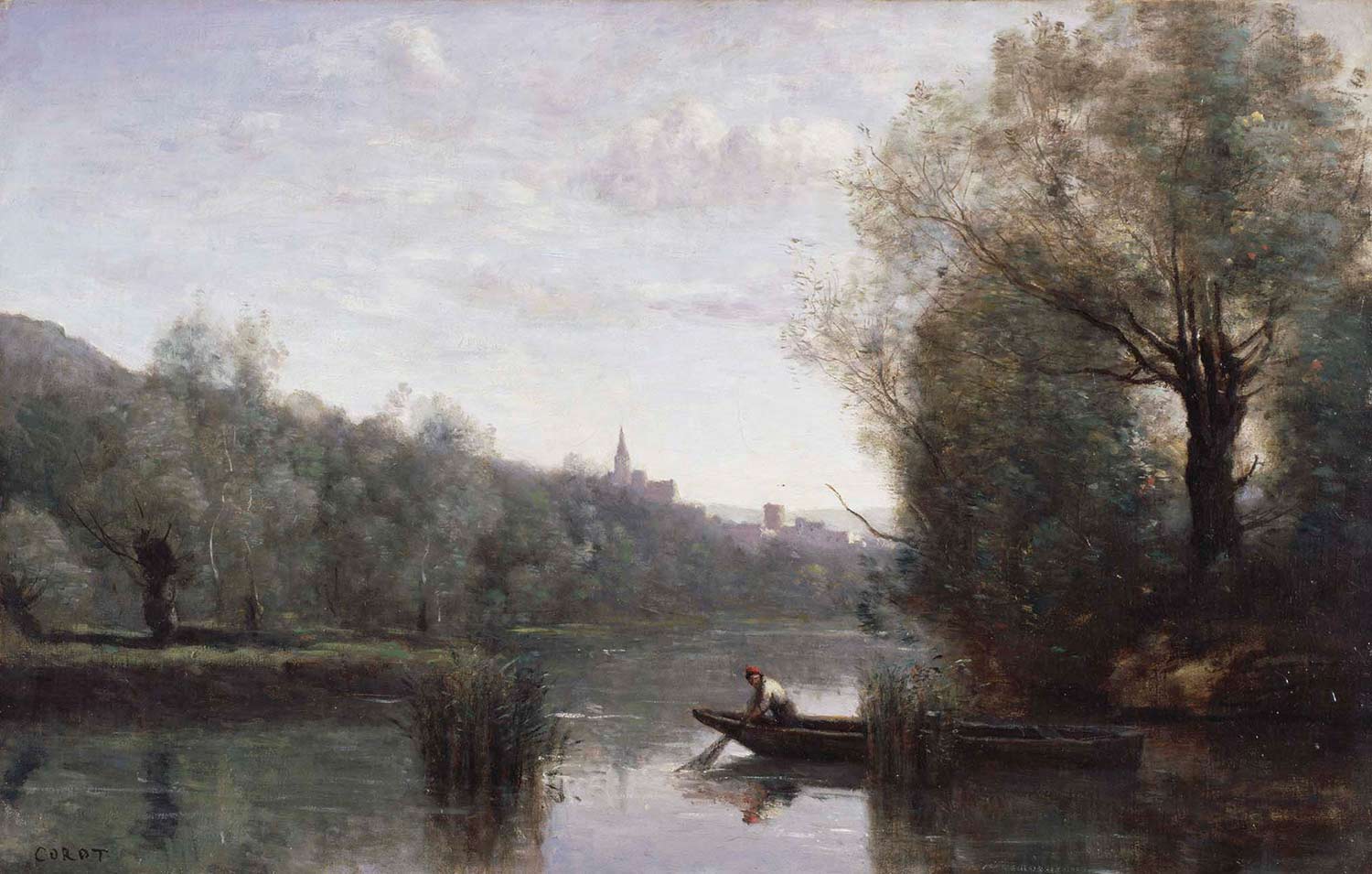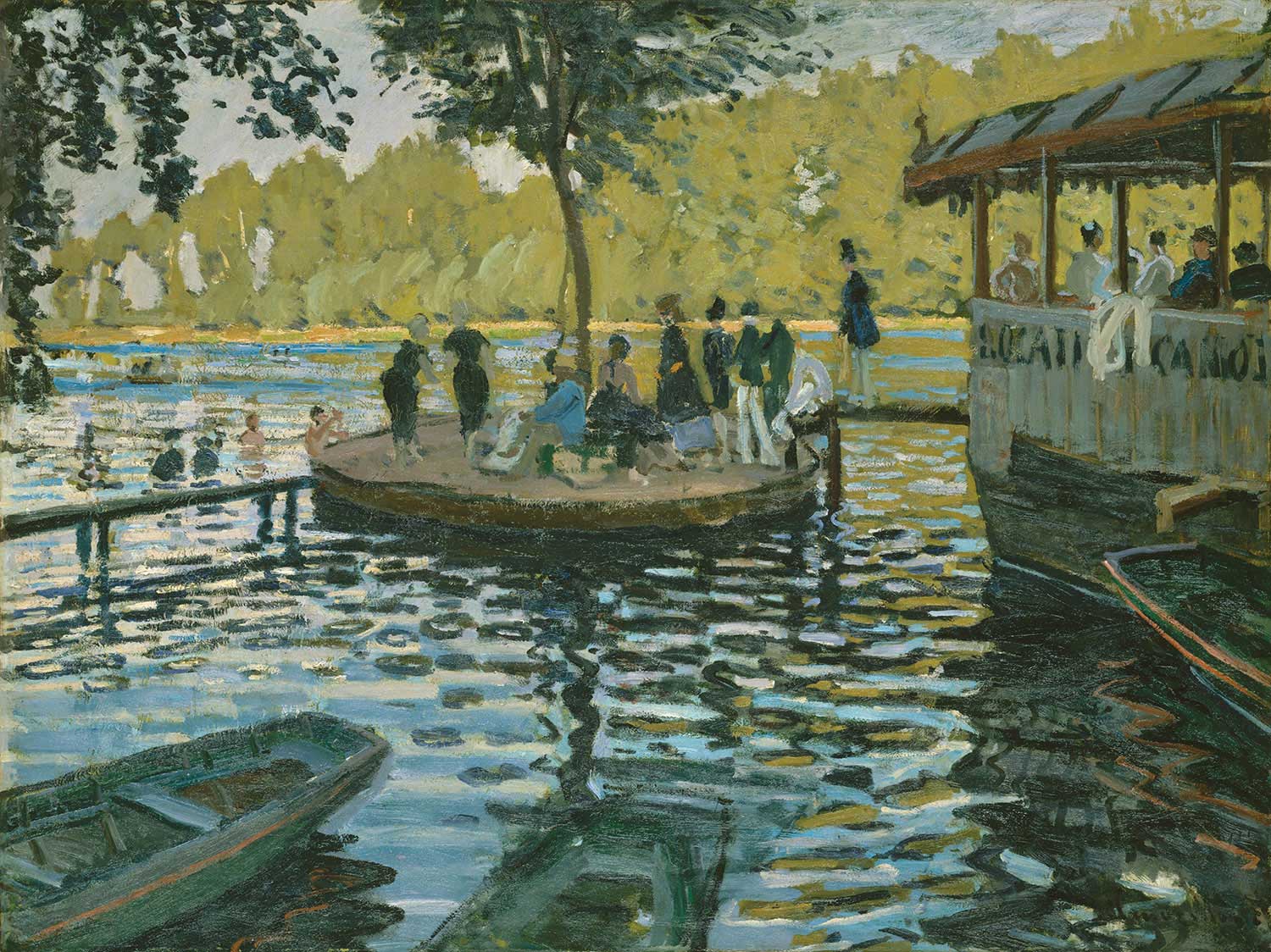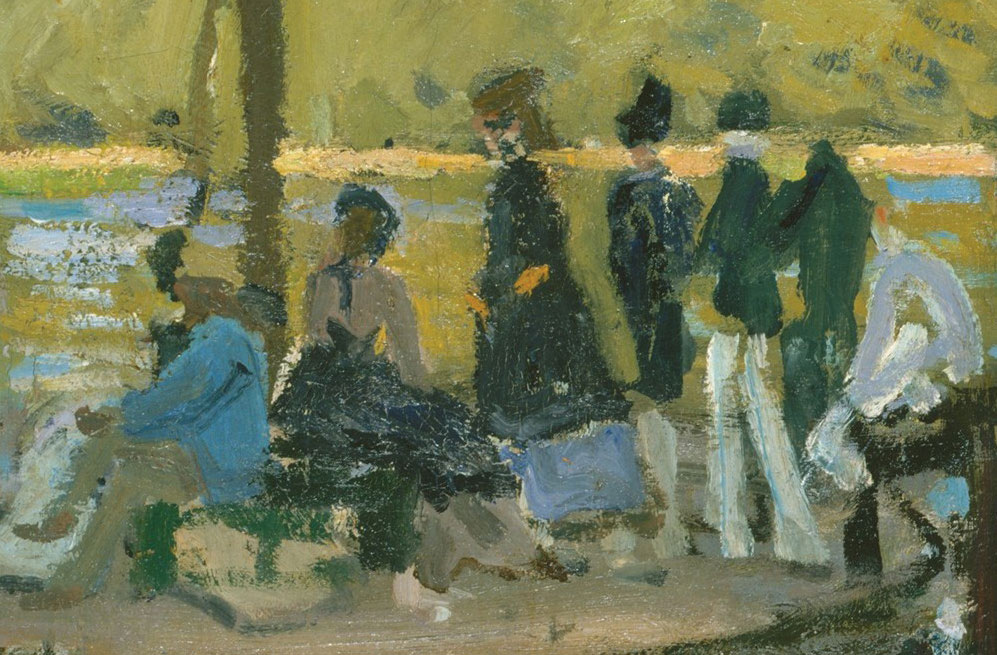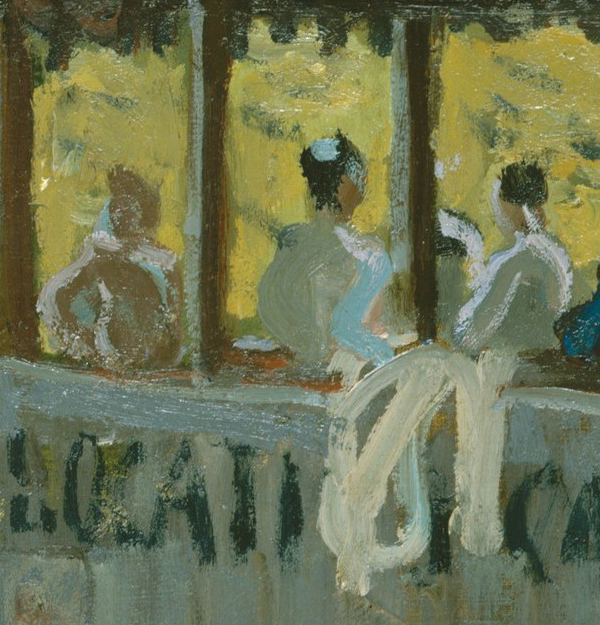What is this “new and revolutionary art”?
Before his success, before there was even the term “Impressionism,” Claude Monet labored to define his style and promote himself as an artist. Explore the first 14 years of Monet’s career, when he struggled to provide food and shelter for himself and his family while creating innovations that would turn the art world upside down. Monet: The Early Years begins in 1858 with the first painting Monet showed publicly and closes in 1872, just before he exhibited that year with the group of artists who would come to be known as the Impressionists.
Who was this young man from a small coastal community, trying to establish himself in the Parisian art world in the 1860s? Two forces drove Monet: his will to be a painter and his will to become critically and commercially successful.

Contending with Convention
The Salon was the official, juried art exhibition of the Académie des Beaux-Arts in Paris, the dominant arts institution in France. Before the rise of private art dealers, exhibiting at the Salon was the best way for artists to gain recognition and make sales. Both the public—around 300,000 people annually—and the critics flocked to the Salons. For the artists, who competed furiously for the right to exhibit, success at the Salon could lead to fame, wealth, social standing, and influence. Buyers liked pictures presenting pretty nudes, sentimental stories, religious subjects, heroic deeds, patriotic scenes, and touching tales.

This work exemplifies the style of painting championed by the Salon. Careful to hide all traces of brushwork, Bouguereau painted a convincing illusion of space. Behind the girl’s shoulder, farmland stretches as far as the eye can see. Bouguereau created a realistic sense of depth within this theatrical and moralizing scene; Salon audiences would have understood that the broken pitcher represents the girl’s lost virtue.
Monet’s Experience with the Salon
Painting was a career, and as in any other, Monet had to figure out the rules to succeed. He knew that acceptance to the Salon was the most assured road to success. Monet actively solicited advice from fellow painters on how to make his paintings acceptable, yet it was difficult to know what would please the Salon jurors.
Below are several paintings he submitted for exhibition to the Salon. Guess which were accepted.

Accepted!
The 24-year-old Monet was successful in having his first submission approved for exhibition at the Salon. This work was also praised in the press: “Monet, unknown yesterday, has immediately made a name for himself with this single painting.”

Rejected!
Monet submitted this seascape in 1868. The young artist had invested a significant sum of money in this large-scale canvas and had to beg his family for money to survive.

Accepted!
This painting was not only accepted to the Salon of 1866, it was well received. This success reassured Monet’s family, and his aunt agreed to lend him financial support.

Rejected!
This scene of Monet’s young family was rejected by the Salon of 1870. Monet could afford to rent the cozy house depicted here because he had recently been commissioned to paint portraits of a businessman’s family.
See the Forest for the Trees
In 1863, the 23-year-old Monet traveled to the majestic forest of Fontainebleau. What was once the private reserve of the kings had become a tourist destination a short railway trip from Paris. He returned the following year and wrote, “The forest is delicious; I should have been here long ago. . . . Everything is superb here.” In Fontainebleau, Monet endeavored to paint entirely out of doors to capture nature directly. This was facilitated by the recent innovation of paint in tubes and portable easels. During this time, Monet also began his practice of returning to a site again and again to experiment with many different ways of registering light under various atmospheric conditions.

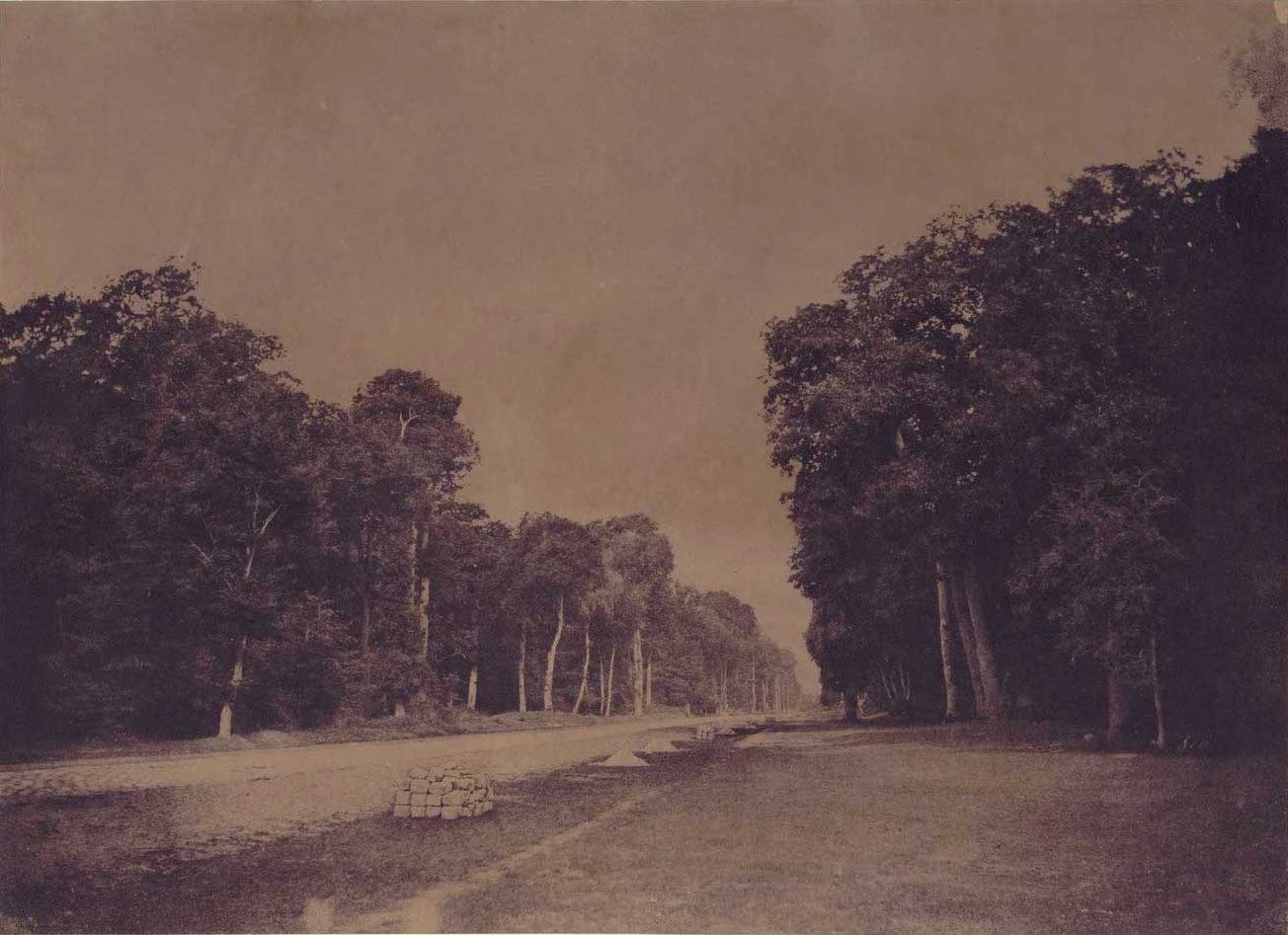
In Fontainebleau, painters and photographers often worked side by side. The relatively new art form of photography freed artists like Monet from the responsibility of making pure visual records and allowed them to move in the direction of capturing immediate sensations and experimenting with form and color. This artistic tendency would eventually lead to modern art styles that dispensed altogether with recreating the physical world.
In this painting Monet deployed several techniques that would evolve into hallmarks of his mature style. Since Fontainebleau was originally a royal preserve, its trees were able to reach majestic heights seldom seen in other landscapes. One such tree that Monet painted several times was this massive oak. First the artist dramatically cropped the tree, bringing the viewer up close and into the deep shadows created by the enormous branches overhead.
Ambition and Risk
In 1865, Monet began an ambitious painting to be submitted to the Salon. Monet knew that scale was important to attract attention at the Salon, and this canvas was more than 13 x 10 feet. Although the work was too large to paint out of doors, he painted many preparatory sketches outside in nature, creating a bravado demonstration of his landscape achievements from Fontainebleau. He populated the picnic scene with life-size figures in modern dress; his friends, acquaintances, and future wife Camille Doncieux posed. Monet wrote that year, “I can think of nothing but my painting, and if I had to leave it, I think I would go mad.” Unfortunately, Monet was too ambitious, and he was unable to complete the canvas in time to submit for the Salon. Economics, always an issue during Monet’s early years, played a role: needing to pay his rent, Monet gave the canvas to his landlord as security. The landlord kept the painting in a damp basement, where parts of the canvas mildewed. When Monet retrieved the painting in 1884, he had to cut away the destroyed parts. These two fragments remain.


Monet was inspired not only by the Barbizon school, but also by French art of the previous century, which he cleverly referenced in his work. By proving to Salon jurors and fellow artists his deep working knowledge of art historical precedents, he hoped to elevate his profile as an artist. He admired the 18th-century paintings of Antoine Watteau, who was well known for his scenes of elegantly dressed people playing music, flirting, or picnicking in idyllic outdoor settings. Monet restaged this elite activity with contemporary middle-class tourists from the city.
Monet also intended his painting as a tribute and a challenge to fellow painter Édouard Manet, a revolutionary figure in the art world. Manet’s Luncheon on the Grass had been rejected by the Salon in 1863; jurors were shocked by the presence of a nude woman among clothed men (in modern attire) who did not serve any mythological or allegorical purpose. The painting was displayed instead that year at the Salon des Refusés, an exhibition initiated by Napoleon III to show works that had been rejected by the Salon. There it became the principal attraction, generating both laughter and scandal.

Paris and Modernity
Paris was in the midst of a vast urban redesign (1853-1870), commissioned by Napoleon III and executed by Baron Haussmann, that included the demolition of overcrowded neighborhoods dating to medieval times. The construction of wide avenues, parks and squares, and new apartment buildings transformed Paris into a modern city.

Monet was fascinated by the manifestations of modern urban life on view throughout Paris. He requested, from the French superintendent of the arts, special access to an exterior colonnade of the Louvre museum to paint views of the center of Paris. There the young artist quite literally turned his back to the great repository of art on display in the Louvre. His vantage point provided a platform from which to paint the present and move art toward modernity. Monet visited the Louvre to see the collection of masterworks hanging in the galleries, but unlike other artists in his circle, he did not paint or draw from them.
Seeking refuge from the intensity of city living, the new middle class traveled to leisure locations easily accessible by train. One such popular destination was a bathing spot on the banks of the Seine, called La Grenouillère (literally “frog pond”). Monet became interested in conveying the immediate sensation of being in the places he painted. In La Grenouillère, the artist carefully captured through color and brushstrokes the effects of light, rendering a composition infused with a sense of pleasure. Notice the multiple activities enjoyed by the figures.
Yet for some observers, the true subject of this painting is the water itself. While the activity of the figures is evoked through quick, energetic dashes of the brush, Monet lavished attention on the water, its multiple colors, its reflections, and its depths.
 image credit
image credit
Monet and the Sea
In 1868, Monet and his family moved to the small fishing village of Étretat, on the Normandy coast. There he focused on painting the unique rock formations, where the tide and wind had created fantastic arches such as the one seen here. Monet returned time and again throughout his lifetime to paint these magnificent geological features.

From this precarious position, Monet captured the majestic mass of white layered chalk as he looked towards the setting sun, the scene backlit and filled with the diffused light of dusk in tones of vibrant pink, violet, and white. The implied cycle of the tides, as well as the impending darkness promised by the obscured setting sun, infuses this work with a sense of cyclical time, which is rebuffed by the enduring mass of the cliff itself. This composition offers an unparalleled opportunity to study not only Monet’s employment of color but also his nuanced use of brushstrokes.

The rock formation is rendered in similar hues, contrasting with the heavy black that depicts wet stone revealed by the ebbing tide.

The firm and steady horizontal brushstrokes of the cliffs contrast with the fleeting horizontal bands of color that fill the sky.

Monet and Camille honeymooned on the Normandy coast at the fashionable resort of Trouville, where they stayed at a modest hotel. Monet, always working, painted many scenes of Camille on the beach.
Camille Monet: The Known and the Unknown

The single most painted individual in this exhibition is Camille Monet, née Doncieux. Camille met Monet in 1865 when she was 18 and working as a studio model. He was 25. Some art historians credit Monet’s success in wooing the beautiful Camille with giving him the confidence to attempt the ambitious Luncheon on the Grass. When he was unable to finish that painting in time for the Salon, Camille posed for the painting Camille (Woman in a Green Dress), which proved a success. Camille herself may have actively participated in the creation of this work by providing Monet with fashion prints and possible suggestions for the pose.
Camille personally endured considerable hardship during the early years of their relationship. By 1867 she was pregnant, unmarried, and living alone in Paris in a one-room apartment paid for by Monet. Even after she married Monet, the family endured eviction and constant hounding by creditors. Camille’s motivations, experiences, and opinions as they relate to the artist remain mysterious and inaccessible, principally because Monet’s second wife demanded that he destroy Camille’s personal effects after his first wife’s death, although the artist did keep with him all of his life the center panel of Luncheon on the Grass, depicting Camille.
Political Unrest
In 1870 France declared war on the German kingdom of Prussia, and the French forces were defeated. Emperor Napoleon III was captured and Paris was occupied by German troops. An armistice was declared in 1871, followed by the establishment of the Paris Commune, a republican insurrection against the French government after the defeat of Napoleon III. The Commune was defeated by French troops, resulting in the deaths of 20,000 citizens. In October of 1870 the Monets fled the unrest in France and settled in London. There, Monet met the Parisian art dealer Paul Durand-Ruel who helped to have Monet’s work shown and sold in London, providing the artist with some economic relief. While in London, Monet painted the chilly, humid winter weather.

 image credit
image credit
In 1871—with France still reeling from the violence and chaos of the war and the Paris Commune—Monet and his family remained expatriates, leaving England for Holland and settling in Zaandam for four months. While there, Monet produced around two dozen paintings of windmills and water, including The Port of Zaandam. Monet’s The Port of Zaandam features a landing stage, or dock. The work is remarkable for the artist’s increasingly abstract treatment of water, painted using rectangular dashes of paint. The setting sun, flags waving from the boat masts, and the buildings lining the port create a sense of quietude. The tall harbor pier, just right of center, interrupts the horizon line, breaking the repetition of the boats and buildings, and directly connects the sky with the reflecting water.
Training Your Eye: Color
Monet’s mastery of color is revealed by comparing and contrasting these two works.

While at first glance, The Magpie reads as a study in white, upon closer examination one discovers a careful orchestration of pink and blue undertones. This variation in tonal quality adds a sense of warmth to the composition while simultaneously creating depth through deep shadows.

On the Bank of the Seine, Bennecourt reveals Monet’s working process and his willingness to let the viewer’s eye do the work. Monet has divided the composition diagonally in half. The deep greens of the foreground add a sense of weight to the riverbank that contrasts with the pastels of the sun-drenched background. Yet within this composition, there are areas where the artist applies paint in startling ways. For example, the bright green patch in the foreground reads purely as a brushstroke and contrasts directly with the darker greens, which are applied in an even pattern that evokes blades of grass. The slight tonal variation between the flesh tone of the figure’s face and the putty reflection of a roof of a building across the bank is another point where the viewer’s eye works, filling in the distance needed to make this transition read as face and roof opposed to the juxtaposition of two squares of color.
Training your Eye: Composition
Observing Nature
Monet: The Early Years reveals both the struggles and successes of the artist’s early career. Throughout this period one thing remained a constant—Monet’s avid preference for working directly from nature. Taking advantage of the stunning trails that meander through Lands End, the area surrounding the Legion of Honor, provides an immediate opportunity to gain insights into the artist’s experience and process.
Maintained by the National Park Service with assistance from the Golden Gate National Parks Conservancy, Lands End boasts recently updated trails that offer easy to moderate walks that range in duration from 25 minutes to 1.5 hours. While enjoying the trails, consider the following, using either a sketchbook or camera-phone to capture your surroundings:


Compositional Focus
The multiple vistas that make this area unforgettable can be enhanced by how you choose to frame the scene. How would you capture the quality of the place? Does your composition emphasize light, the meandering of a path, or the drama of the cliffs?

Color and Texture
As you explore the trails, note the multitude of colors and textures. Within one viewpoint, how many different shades of green do you see? How do the variations of color and texture add layers to the landscape?

Sensory Connections
What does being in nature add to your experience? What do you hear? What is the temperature? What is constant and what changes?
Download Map
Visit Land’s on the National Park Service website.
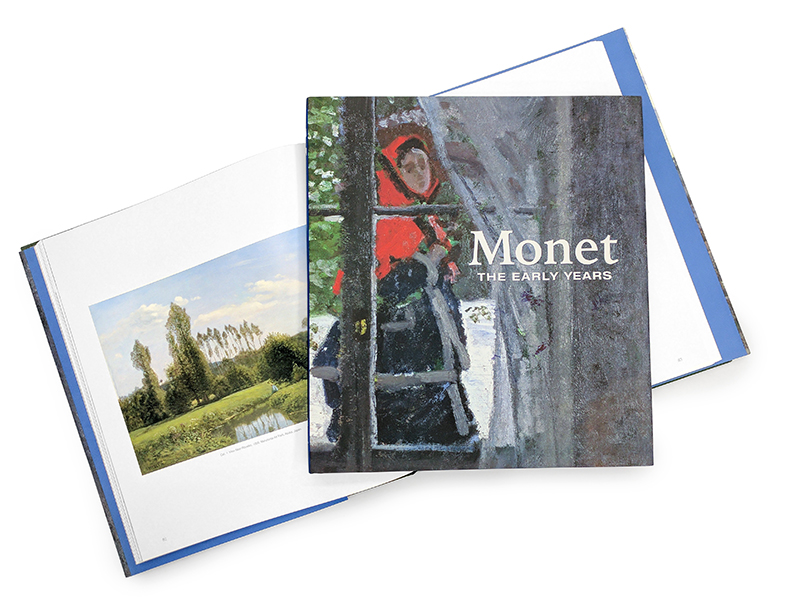 Monet: The Early Years Exhibition Catalogue and Pictorial.
Monet: The Early Years Exhibition Catalogue and Pictorial.
